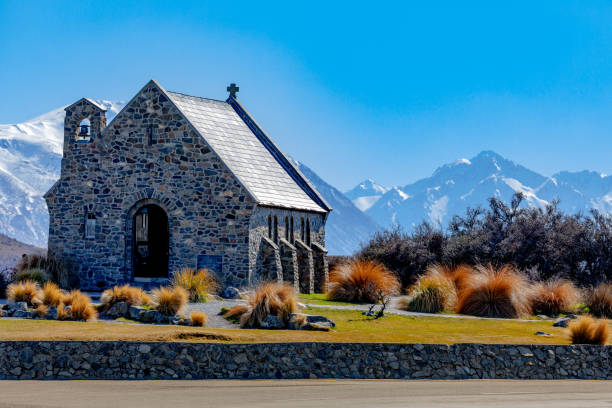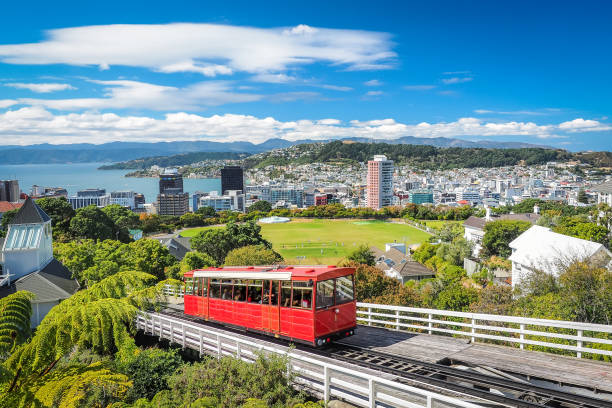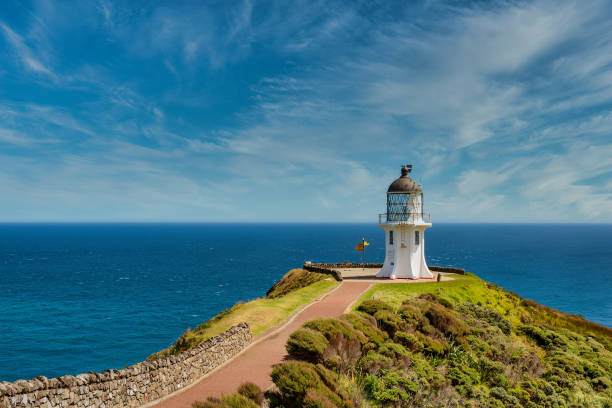Discover the fascinating journey of New Zealand from its earliest settlers to its modern-day standing on the global stage. This article delves into the major epochs and events that have shaped this unique island nation. Join us as we explore the New Zealand History timeline through eight insightful sections.
The Arrival of the Maori (c. 1300 AD)
The New Zealand History timeline begins with the arrival of the Maori people. Originating from Eastern Polynesia, Maori navigators used waka hourua (voyaging canoes) to make the long journey to New Zealand.
Initial Settlements
Upon their arrival, the Maori settlers established their first communities primarily in the North Island of New Zealand. Over time, they dispersed and settled throughout the country, creating a network of interconnected communities.
Social Structure
Maori society was characterized by a tribal social structure, which formed the foundation of their communities. The social organization was based on three key levels:
- Whānau (Family): At the core of Maori society was the whānau, or family unit. Families were central to Maori life, providing support, guidance, and identity to its members.
- Hapū (Subtribe): The next level of social organization was the hapū, or subtribe. Hapū consisted of several whānau groups with common ancestry, territory, and cultural practices.
- Iwi (Tribe): The highest level of social organization was the iwi, or tribe. Each iwi comprised multiple hapū groups and had its own distinct identity, leadership, and territories.
Cultural Developments
The Maori people developed a vibrant and distinctive culture, which continues to thrive today. Some key cultural developments include:
- Carvings: Maori artisans crafted intricate wood carvings, adorning meeting houses, canoes, and cultural artifacts with depictions of ancestral figures, mythological beings, and cultural symbols, conveying stories and genealogies.
- Weaving: Maori artisans used flax fibers to create finely crafted garments, baskets, and mats, employing traditional weaving techniques passed down through generations to produce intricate patterns and designs.
- Haka: The haka, a traditional Maori dance accompanied by rhythmic chanting, stamping, and gestures, gained international recognition through performances by Maori cultural groups and the New Zealand national rugby team, the All Blacks, originally serving as a ceremonial challenge or expression of identity.
European Exploration (1642 Onwards)
European involvement in New Zealand began with the arrival of Dutch explorer Abel Tasman in 1642, but it was Captain James Cook’s voyages starting in 1769 that truly opened up New Zealand to the West.
Tasman’s Encounter
Abel Tasman, aboard the ships Heemskerck and Zeehaen, was the first European to sight New Zealand on December 13, 1642. However, due to tense encounters with Maori waka (canoes), Tasman decided not to land. Despite this brief encounter, Tasman’s voyage marked the first recorded European contact with New Zealand.
Cook’s Journeys
Captain James Cook’s expeditions, particularly his three voyages between 1769 and 1777, played a pivotal role in the exploration and mapping of New Zealand. Cook’s first voyage, aboard the HMS Endeavour, began in 1768 with the primary aim of observing the Transit of Venus and exploring the South Pacific.
Table: James Cook’s Voyages
| Voyage | Dates | Objective |
| First Voyage | 1768-1771 | Observe the Transit of Venus, explore the South Pacific, including New Zealand and the eastern coast of Australia |
| Second Voyage | 1772-1775 | Search for the hypothetical Terra Australis, explore the Southern Ocean, circumnavigate the globe |
| Third Voyage | 1776-1779 | Search for the Northwest Passage, explore the Pacific Ocean, visit Hawaii and the Pacific Northwest coast |
Impact on Maori
European exploration and subsequent contact with Maori had multifaceted effects on Maori society, including the introduction of new technologies, weapons, and diseases.
- Introduction of New Technologies: European explorers brought metal tools, firearms, and navigation instruments to Maori, transforming society with new methods in construction, agriculture, and warfare.
- Impact of Weapons: Firearms provided by Europeans shifted power dynamics among Maori tribes, altering traditional warfare strategies and intertribal conflicts.
- Spread of Diseases: European exploration introduced diseases like influenza, measles, and tuberculosis to New Zealand, causing widespread illness and mortality among Maori due to lack of immunity, leading to significant population decline and social disruption.
Treaty of Waitangi (1840)

The Treaty of Waitangi, signed in 1840 between the British Crown and various Maori chiefs, marked a pivotal point in the New Zealand History timeline.
Bicultural Foundation
At its core, the Treaty of Waitangi aimed to create a bicultural foundation for New Zealand, recognizing both Maori and British sovereignty. The treaty was composed of three main articles, each carrying significant implications for the relationship between Maori and the British Crown.
- Sovereignty: The first article ceded sovereignty to the British Crown, granting the Queen exclusive rights over New Zealand lands and resources. In return, Maori were promised the rights and privileges of British subjects.
- Protection of Maori Rights: The second article guaranteed the protection of Maori land, resources, and customs. It affirmed Maori ownership of their lands, forests, fisheries, and other possessions, ensuring they retained control over their cultural heritage and way of life.
- Governance: The third article established a system of governance, granting Maori the same rights and privileges as British subjects under British law.
Disputes and Conflicts
Despite its noble intentions, the Treaty of Waitangi quickly became the subject of disputes and conflicts due to differences in interpretation and implementation. The British Crown and Maori chiefs held divergent understandings of the treaty’s clauses, leading to grievances and tensions.
- Land Confiscations: British expansionism often ignored Maori land rights, leading to confiscations that violated the Treaty of Waitangi. Maori protests and resistance ensued.
- New Zealand Wars: Disputes over land and governance sparked conflicts known as the New Zealand Wars (1845-1872), causing significant loss of life and land for Maori.
- Ongoing Grievances: The Treaty’s legacy shapes New Zealand’s socio-political landscape, fueling grievances over land, cultural rights, and socio-economic disparities. The Waitangi Tribunal, since 1975, addresses historical injustices and seeks redress for Maori.
Colonial Growth and Conflict (1840-1900)
Post-Treaty, New Zealand saw significant European settlement, economic growth, and unfortunately, conflict with the Maori.
Economic Expansion
The post-Treaty period in New Zealand was characterized by rapid economic growth, fueled by European settlement and the expansion of agricultural industries. The introduction of sheep farming, in particular, played a pivotal role in the country’s economic development.
- Sheep Farming: European settlers introduced large-scale sheep farming to New Zealand, capitalizing on the abundance of fertile land and favorable climate. The growth of the wool industry became a cornerstone of the economy, driving export revenues and facilitating the establishment of thriving agricultural communities.
- Wool Industry: The wool industry boomed during this period, with New Zealand becoming one of the world’s leading exporters of wool. The export of wool to British markets provided a vital source of income for the colonial economy, contributing to the nation’s prosperity and growth.
Land Wars
Despite the provisions of the Treaty of Waitangi aimed at protecting Maori land rights, disputes over land ownership and control led to a series of conflicts known as the Land Wars or New Zealand Wars. These conflicts, spanning several decades, arose from conflicting interpretations of land transactions and breaches of the treaty.
- Disputes over Land: European settlers, eager to acquire land for agricultural expansion, often encroached upon Maori territories, leading to tensions and conflicts. Maori tribes, seeking to defend their ancestral lands and sovereignty, engaged in resistance movements against European colonization.
- Armed Conflicts: The Land Wars, which occurred between 1845 and 1872, saw numerous battles and skirmishes between European military forces and Maori warriors. These conflicts, characterized by fierce resistance and acts of violence, resulted in significant loss of life and the displacement of Maori communities from their traditional territories.
Social Changes
The latter part of the 19th century witnessed significant social changes in New Zealand, including reforms aimed at creating a more inclusive and representative political system.
- Political Reforms: The introduction of democratic reforms, such as universal male suffrage in 1879 and women’s suffrage in 1893, marked important milestones in New Zealand’s political evolution. These reforms expanded political participation and representation, laying the groundwork for a more inclusive and democratic society.
- Cultural Integration: Despite the conflicts and challenges of the colonial period, New Zealand underwent processes of cultural integration and exchange between Maori and European settlers. Interactions between the two cultures led to the adoption of new technologies, customs, and traditions, shaping the unique cultural identity of modern New Zealand.
The 20th Century: Wars and Social Progress
The 20th century was a period of turmoil and transformation in the New Zealand History timeline.
World Wars
New Zealand played crucial roles in both World Wars, contributing troops, resources, and support to the Allied cause. These conflicts had profound impacts at home and abroad, shaping New Zealand’s identity and relationships with the international community.
- World War I: New Zealand contributed significantly to the Allied war effort, with around 100,000 New Zealanders serving overseas. The Gallipoli Campaign symbolizes sacrifice and resilience in New Zealand’s national consciousness.
- World War II: New Zealand mobilized forces once more, contributing troops to major theaters of the conflict, including North Africa, Italy, and the Pacific. The Battle of Crete and the Pacific Campaign highlighted New Zealand’s military prowess and commitment to the Allied cause.
Social Reforms
The 20th century also witnessed major social reforms that reshaped New Zealand society and set the stage for greater equality and inclusivity.
- Women’s Suffrage: New Zealand led the world by granting women the right to vote in 1893, a pivotal moment for gender equality worldwide.
- Social Welfare: New Zealand implemented 20th-century social welfare reforms, including state pensions, healthcare, and social security programs, fostering greater social cohesion and equality.
Economic Shifts
From a predominantly agricultural economy, New Zealand underwent significant economic shifts towards industrialization and service-oriented sectors during the 20th century.
- Agricultural Dominance: At the turn of the century, agriculture, especially sheep farming and dairy production, was pivotal to New Zealand’s economy, driving export revenues and economic stability.
- Industrialization: In the mid-20th century, industrialization emerged, fostering the growth of manufacturing industries and urban centers, leading to economic diversification.
- Service-Oriented Economy: Towards the latter half of the 20th century, New Zealand transitioned to a service-oriented economy, witnessing growth in tourism, finance, and information technology, aligning with global trends towards post-industrial economies and knowledge-based industries.
The Waitangi Tribunal (1975)

Established in 1975, the Waitangi Tribunal became a crucial mechanism for addressing historical grievances.
Role and Function
The primary function of the Waitangi Tribunal is to investigate claims of Treaty of Waitangi violations by the New Zealand government or its agencies. The tribunal operates as an independent body, separate from the judiciary, and is empowered to inquire into past actions or omissions that have adversely affected Maori rights, interests, or well-being.
- Claims Process: The tribunal reviews claims from Maori individuals, groups, or organizations alleging Treaty of Waitangi breaches, covering issues like land confiscations, cultural redress, fisheries, or natural resources.
- Inquiry and Adjudication: Upon receiving a claim, the Waitangi Tribunal conducts thorough inquiries, gathering evidence, and hearing testimony from both claimants and respondents. It ensures fairness and natural justice, allowing all parties to present their case.
- Recommendations and Reports: After inquiries, the Waitangi Tribunal issues reports outlining findings, recommendations, and proposals for redress or settlement, including historical analysis and legal interpretations.
Landmark Cases
Over the years, the Waitangi Tribunal has presided over numerous landmark cases, resulting in significant settlements and acknowledgments of historical injustices suffered by Maori communities.
- Ngāi Tahu Settlement: The Waitangi Tribunal addressed Crown breaches of the Treaty of Waitangi in this significant case. In 1998, the Ngāi Tahu Settlement Act provided financial compensation and returned land to the Ngāi Tahu iwi.
- Treaty Settlements: Facilitated by the Waitangi Tribunal, these aim to address historical grievances, restoring land, resources, and cultural assets to Maori communities, guided by partnership and reconciliation principles.
- Cultural Redress: These settlements may include recognizing customary rights, protecting sacred sites, and establishing co-governance arrangements for natural resources.
New Zealand in the 21st Century
Entering the 21st century, New Zealand has embraced its multicultural identity while continuing to address its colonial past.
Global Presence
New Zealand has emerged as a notable presence on the global stage, contributing to peacekeeping efforts and advocating for environmental sustainability.
- Peacekeeping Roles: New Zealand is internationally recognized for its contributions to peacekeeping missions, from United Nations operations to humanitarian relief efforts, earning respect and admiration globally.
- Environmental Advocacy: New Zealand is a vocal advocate for environmental conservation and sustainability, addressing climate change, biodiversity protection, and promoting renewable energy initiatives, aligning with global efforts to combat climate change and preserve natural resources.
Domestic Policies
Within its borders, New Zealand has implemented domestic policies aimed at fostering greater understanding, partnership, and co-governance between Maori and non-Maori populations.
- Improving Relations: Recent years have seen focused efforts to better Maori and non-Maori relations, acknowledging historical injustices and disparities. Prioritizing dialogue, reconciliation, and collaboration aims to address colonial legacies and promote social equity.
- Partnership and Co-Governance: Initiatives like Treaty settlements and Maori representation in decision-making reflect New Zealand’s commitment to shared governance. By recognizing Maori rights and perspectives, these policies aim to build inclusive communities and institutions.
Conclusion
By exploring the New Zealand History timeline, we gain insight into the dynamic and evolving story of this nation. From its early Polynesian roots to its current status on the world stage, New Zealand’s history is a testament to its resilience and diversity.
FAQ
The Treaty of Waitangi is considered the foundational document of New Zealand, establishing governance under British rule while supposedly safeguarding Maori rights and territories.
The Maori reaction varied widely, from welcoming and trading to conflicts arising from cultural misunderstandings and resource competition.
The World Wars greatly influenced New Zealand’s national identity, with a significant proportion of the population serving overseas, which brought about profound social and economic changes.
The Waitangi Tribunal plays a critical role in addressing past injustices, facilitating negotiations between the government and Maori groups to settle historical Treaty breaches.
